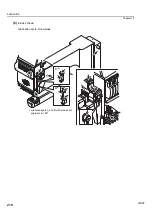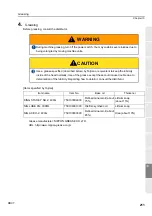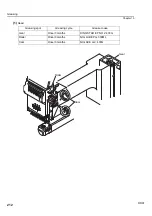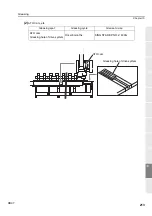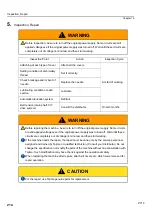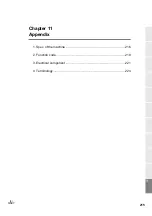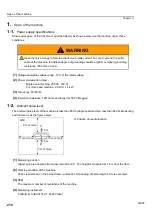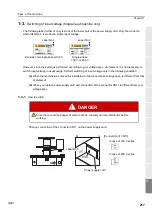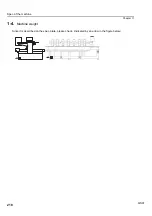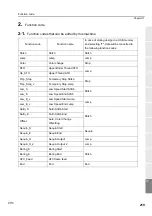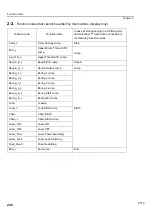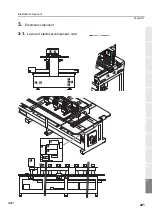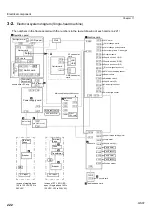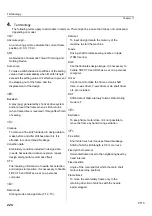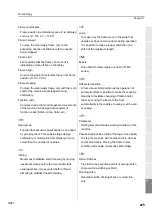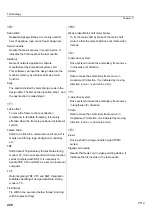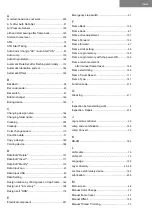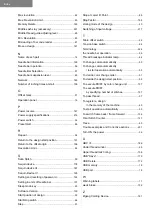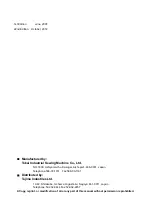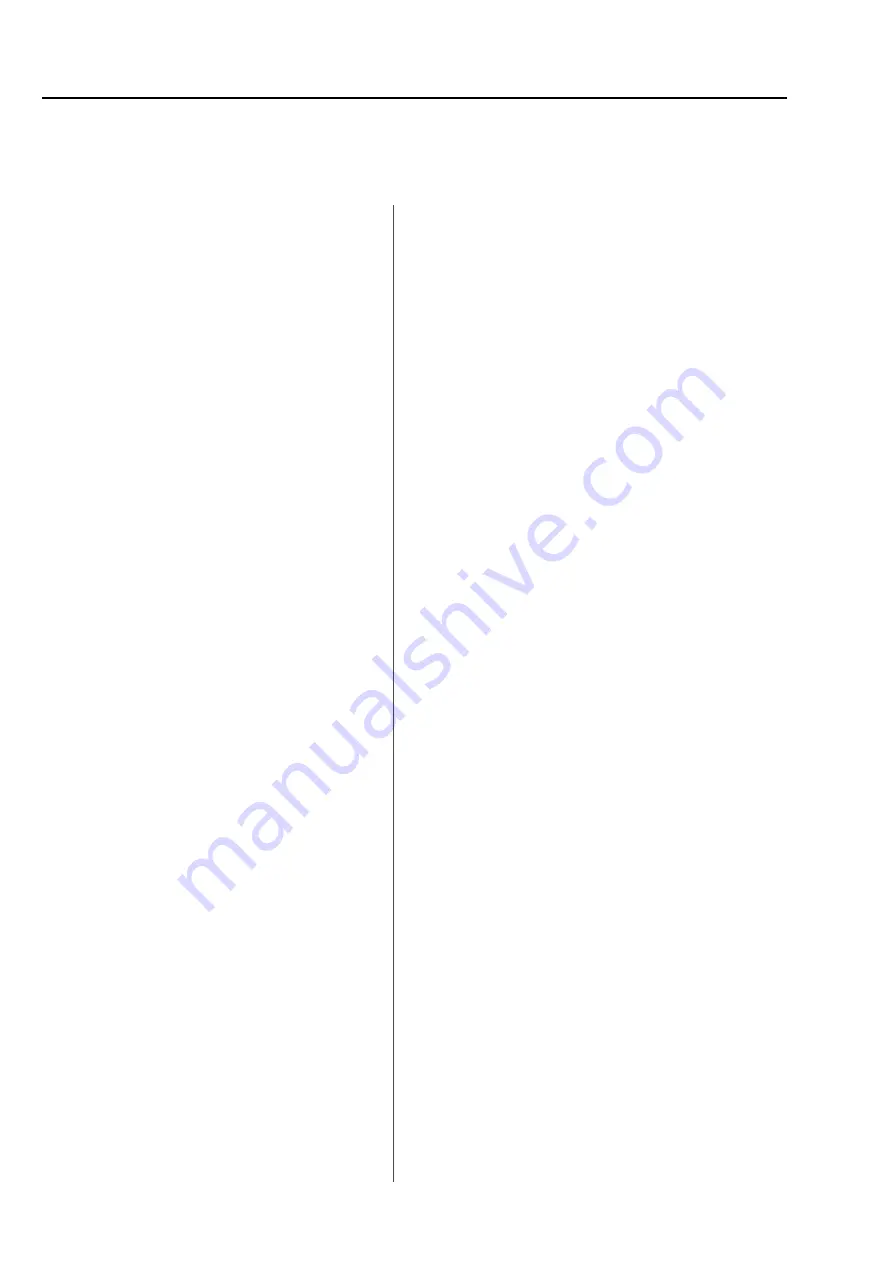
Terminology
224
Chapter 11
PT10
4.
Terminology
The following terms apply to all models in common. There might be a case that it does not correspond
depending on model.
Data set
To input design data to the memory of the
machine to start the machine.
D-axis
Driving shaft to rotate sewing needle or nipple
(TCMX series).
DGF
File that indicates design image. It is necessary to
handle TBF, CT0 and DGF as a set on a personal
computer.
Driver
Control card to make the frame or main shaft
drive. X-axis driver, Y-axis driver, main shaft driver
etc. are included.
DST
Stitch data of Tajima ternary format. Data storing
mode is T.
<E>
Excitation
To keep frame motor drive. It is not possible to
move the frame by hand during excitation.
<F>
Fine stitch
Short stitch such as it causes thread breakage.
Stitch of which stitch length is 0.5 mm or less.
Fixed pitch movement
Horizontal frame travel to the neighboring head by
head interval.
Fixed position
Angle of the main shaft at which the main shaft
motor stops (stop position).
Frame Back
To move the embroidery frame only to the
returning direction of stitches with the needle
bar(s) stopped.
<A>
Absolute origin
An anchoring point to calculate the current frame
position (X: 0.0, Y:0.0).
ATH
Abbreviation of Automatic Thread Trimming and
Holding Device.
Auto Jump
To make a stitch divided into stitches of the setting
value or less automatically when its stitch length
exceeds the setting value. It is effective to prevent
the stepping out of the frame and the
displacement of the design.
<B>
Backlash
A play (gap) generated by shock at drive system
and/or around the frame when a stitch returns
(when frame drive is reversed). It may affect finish
of sewing.
<C>
Cleanup
To remove a fine stitch included in design data to
make before and after stitches absorb it. It is
effective to reduce thread breakage.
Condition data
Embroidery condition included in design data
(needle bar selection, data conversion, repeat,
design start position, automatic offset).
CT0
File including information of needle bar selection
and design start position. It is necessary to handle
TBF, CT0 and DGF as a set on a personal
computer.
<D>
Data mode
Storing mode of design data (T, T2, T3).
Summary of Contents for TEMX-C Series
Page 13: ...To search from the menu key ...
Page 25: ...Inspection before starting work 12 Chapter 1 ...
Page 39: ...How to use each part 26 Chapter 2 ...
Page 40: ... E 1 2 3 4 5 6 7 8 9 10 11 27 PT10 Chapter 3 Screen 1 Screen display 28 2 Message display 31 ...
Page 147: ...Other functions that must be remembered 134 Chapter 5 ...
Page 171: ...To move the frame to the position registered 158 Chapter 6 ...

